Clerodendrum: features, rules of planting, care and reproduction
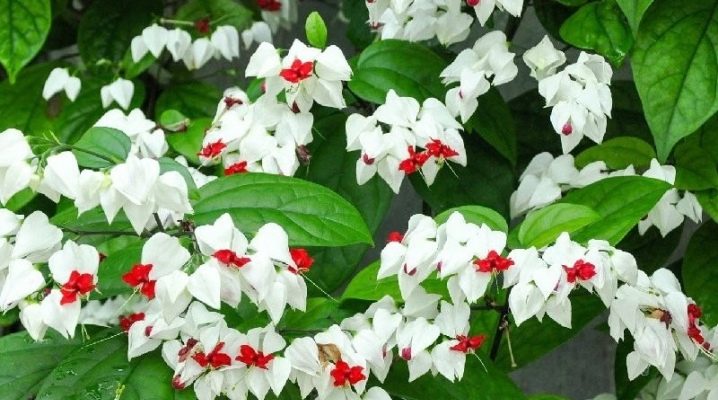
Clerodendrum, or volcameria, is loved by many flower growers and landscape designers. The plant is appreciated for long and abundant flowering, and is actively used for landscaping yards, indoor greenhouses and front gardens.
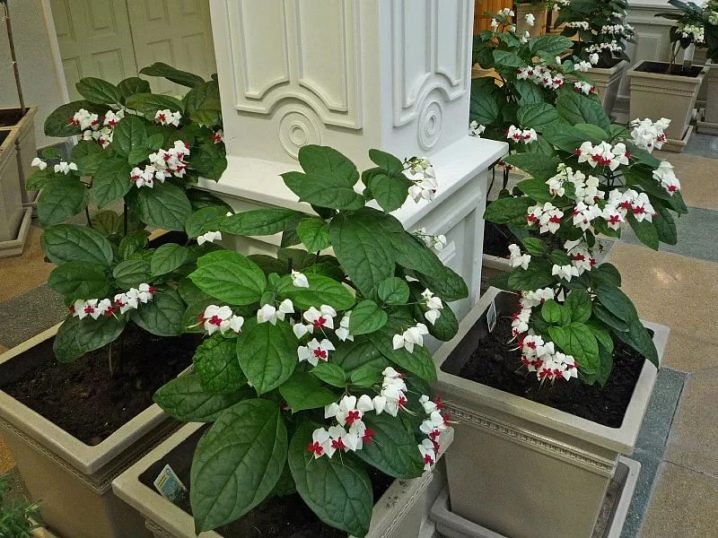
Description
Clerodendrum (lat.Clerodendrum) is a liana-like or shrub plant, characterized by lush and long flowering. Translated from ancient Greek, the word "clerodendrum" is translated as "tree of fate", and the whole history of the species is shrouded in many beliefs and legends. For example, the aborigines of the island of Java believed that a donated branch of a plant could drastically change a person's fate, giving him some important chance.
Among the ancient Romans, volcameria was considered a love amulet and was presented as gifts to the goddess Venus, being the main decoration of her temples. In European countries, the peak of popularity of clerodendrum came in the middle of the 19th century, when the plant began to be actively grown in greenhouses and flower gardens. A little later, it became the object of close attention of breeders, who, by crossing different species, received a large number of the most beautiful varieties.
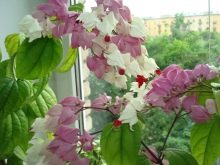

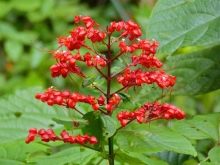
Clerodendrum is a member of the Lamiaceae family and is found in the natural environment in the tropical regions of Asia, Africa and Latin America, as well as on the islands of the Indian Ocean and Australia. Among the wide variety of species, there are both evergreen and deciduous forms, while vines can reach 4 m, and shrub representatives of the genus grow to only two. The tetrahedral stems of the plants have a smooth olive or red-brown skin and are covered with opposite petiole leaves of a bright emerald color. The shape of the leaf blades depends on the type of plant and can be heart-shaped, oval or ovoid. The length of the leaves varies from 8 to 20 cm, and the edges can have a solid or finely toothed structure. The surface of the blades has a distinct venation with a well-visible depression along the central and lateral veins.
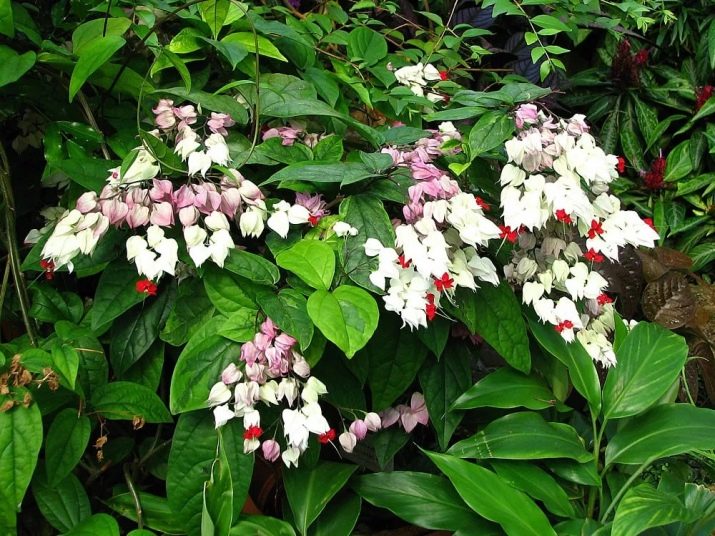
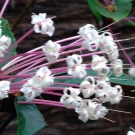
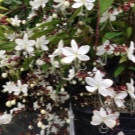

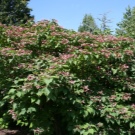
The inflorescences of the clerodendrum consist of small and very beautiful flowers, located in the tops of the shoots or axils of the leaves and have a corymb or paniculate type of structure. Thanks to long peduncles, they look very elegant and look like lush bouquets. The cups are bell-shaped and divided into 5 lobes, and their diameter can reach 2.5 cm. The corolla is painted in contrasting colors, and long and thin stamens grow from its middle, often reaching 3 centimeters.


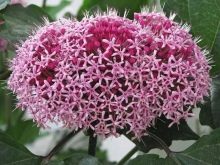
The flowering period for most volcameria lasts from April to September and is accompanied by a very pleasant aroma. Moreover, not only flowers smell, but also leaves, while each species has its own unique smell. The bracts of the clerodendrum are large enough and remain on the bush until dormant, causing the impression of constant flowering among others. After flowering, most plants develop orange fruits that are oblong, 1 cm long and contain a single seed.
Due to its high decorative qualities and unpretentiousness, clerodendrum is widely used as a houseplant, decorating window sills and winter gardens with its butterfly inflorescences, as well as in phytodesign, where vertical gardening is performed with its help.
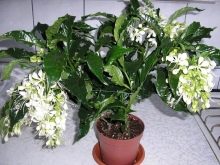
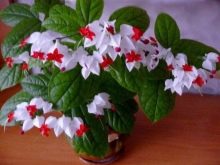
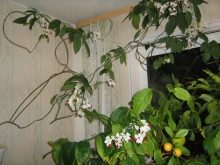
Types and varieties
The genus Clerodendrum has a huge number of species and varieties, but not all of them are used as a houseplant. Below is an overview of the most popular species that are often used by growers for home growing and garden cultivation.
- Ugandan Clerodendrum (lat.Clerodendrum ugandense) presented in the form of a liana-shaped shrub with broad-lanceolate leaves and two-color inflorescences: the upper and side petals are blue in color, and the lower one is painted in purple. A distinctive feature of the species is the duration of flowering: faded inflorescences are quickly replaced by new ones, giving the impression of a continuous process. The plant grows well in open ground and can reach a height of 3 meters in a couple of months. When grown at home, the bushes are more compact, but they require constant crown formation and competent pruning. The plant belongs to the category of drought-resistant species and forgives its owners some carelessness in watering.

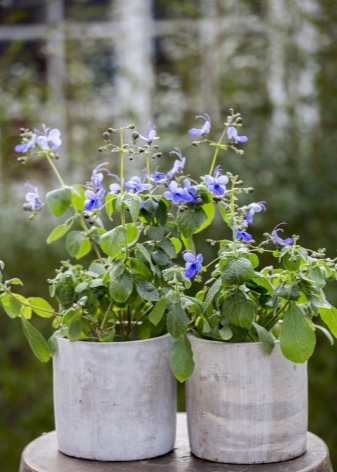
- Wallich's Clerodendrum (Prospero) (lat.Clerodendrum wallichii) presented in the form of a smooth-leaved evergreen bush, covered with bright white inflorescences with long hanging stamens. For its spectacular appearance, the flower is called "bride's veil" or "bride's veil". The bush has red-green branches with dark green oblong leaves 5-8 cm long, in the internodes of which beautiful white flowers bloom.
The species is distinguished by demanding care and needs a long day of light and high humidity.
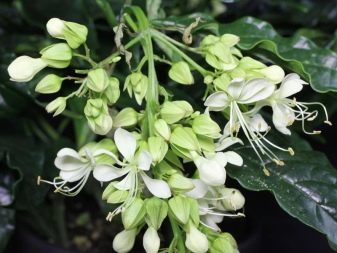
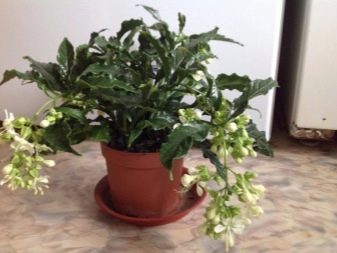
- Clerodendrum Inerme is a variegated species and has a beautiful rich emerald foliage. On the oval-oblong leaf blades, light green marble veins are clearly visible, which gives the bush a unique appearance. The flowers are dark purple in color and, thanks to their long hanging stamens, are very similar to bright and graceful butterflies.
In general, the species is among the unpretentious, however, like any plant, it requires the creation of favorable conditions.
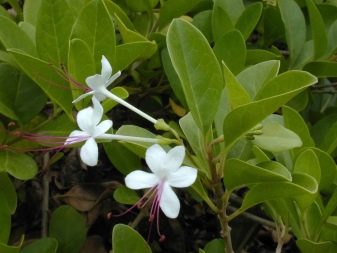
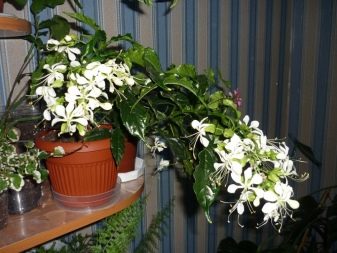
- Clerodendrum brilliant (lat.Clerodendrum Splendens) it is represented by an evergreen bush with long curly stems. The leaves are oppositely arranged and grow in whorls of 3 pieces. They are characterized by round shapes, have a heart-shaped base and grow up to 8 cm in length. Peduncles grow from leaf sinuses and are dense clusters of scarlet flowers. With the creation of favorable conditions and proper care, the species can bloom all year round.
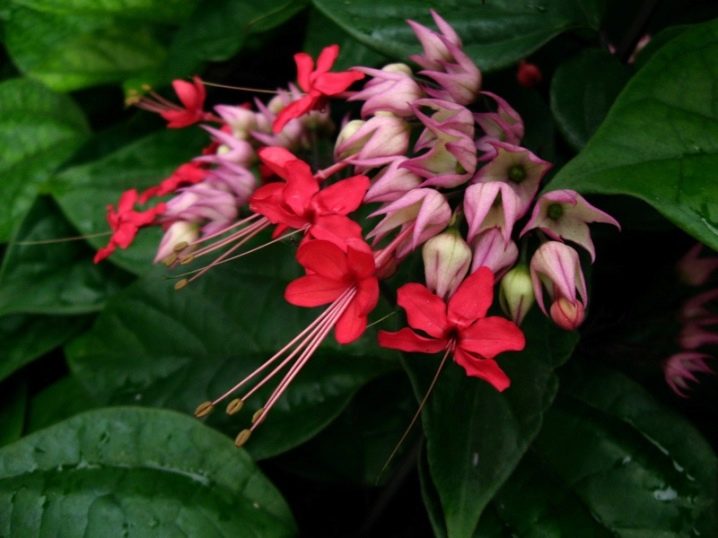
- Clerodendrum Thomsoniae (lat.Clerodendrum Thomsoniae) is a deciduous ligneous vine and needs regular pruning. The plant is distinguished by a very spectacular flowering, during which, against the background of snow-white bracts, red flowers bloom with elongated stamens hanging from them. In the countries of Southeast Asia, the flower is known as "innocent love" and is not recommended for growing by unmarried girls because of the risk of unrequited love. Dense dark green leaves reach 12 cm in length, and on bright white, bell-like bracts, small scarlet flowers with elongated creamy stamens bloom. Flowering lasts from the end of March to June, but if the conditions for its cultivation are more than favorable, then the vine can bloom in the fall. The species tolerates drought well and feels great at temperatures no lower than 15 degrees.
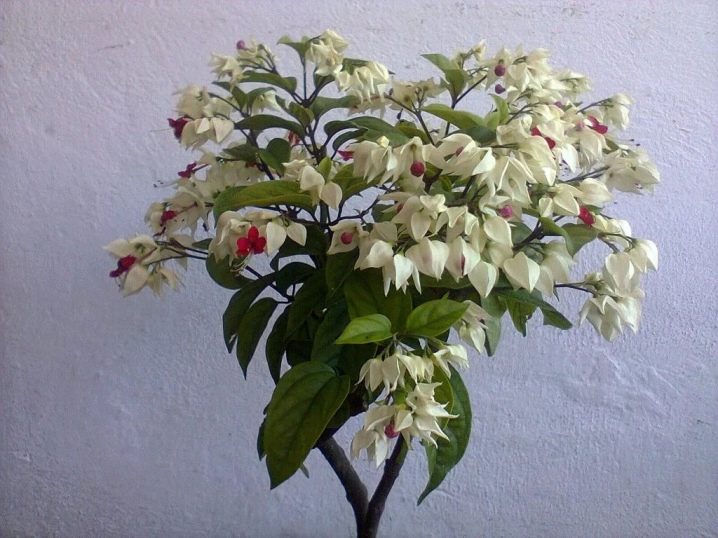
- Clerodendrum Bungei is a beautiful climbing liana and is characterized by a fairly rapid growth. The leaves have a beautiful lilac hue, and the ends of the shoots are decorated with large spherical inflorescences of a dark pink color. In the process of flowering, which lasts all summer, the flowers brighten a little and from a distance resemble fireworks.
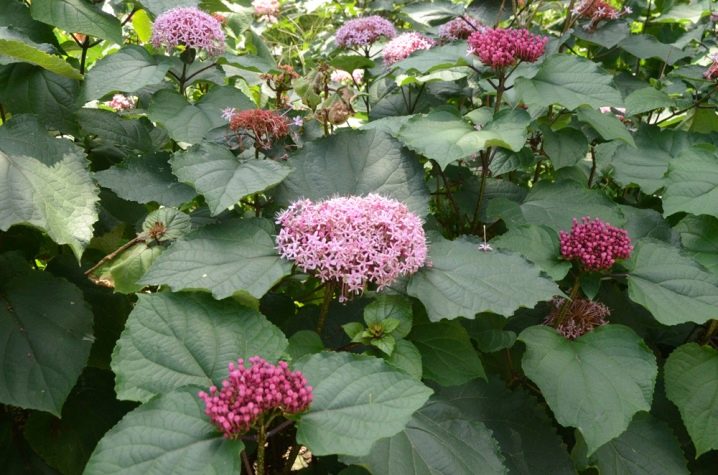
- Clerodendrum the most beautiful (lat.Clerodendrum speciosissimum) It is represented by an evergreen shrub, reaching a height of 3 m. The heart-shaped leaves have a soft, pleasant to the touch edge, long pale red petioles and are located oppositely on the tetrahedral trunk. Inflorescences are formed in a panicle type and consist of small flowers with dark red corollas and purple calyxes.Flowering lasts from early June to late September and is characterized by the abundance and brightness of colors.

- Fragrant Clerodendrum (Clerodendrum fragrans) It is represented by an evergreen shrub, and is able to grow up to 2 m. The leaves and stems of the plant have a soft edge, which makes them very pleasant to the touch. Double flowers with a slightly pinkish outer part exude a delicious aroma, bearing hints of citrus and violets. In indoor conditions, with good care, the plant can bloom almost all year round.
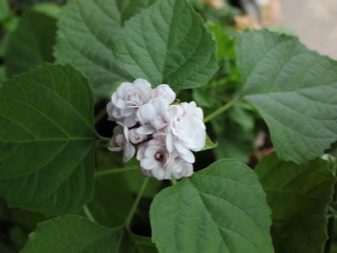
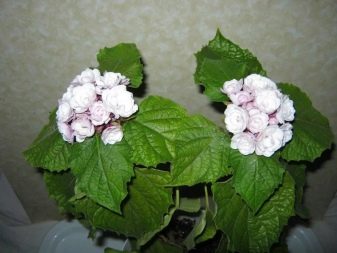
- Clerodendrum Schmidt, also known as the "Chain of Glory" (lat. Clerodendrum schmidtii), outwardly resembles a "bride's veil" (Wallich's clerodendrum) and is a voluminous bush. The cluster inflorescences, reaching a length of 50 cm, consist of fragrant flowers and hang down in a snow-white cascade. Flowering lasts almost all year round with short interruptions. The winter months are no exception, and during this period the bush can bloom up to two times.
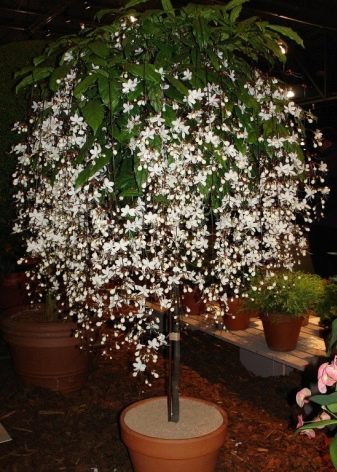
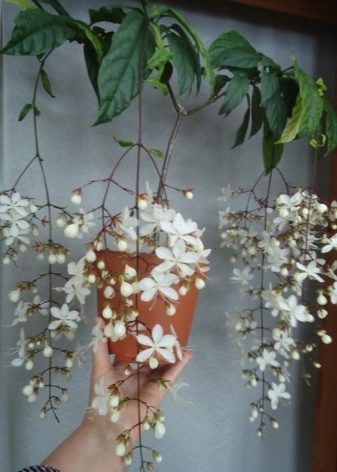
- Clerodendrum specialosum (fairest) is a hybrid species resulting from the crossing of Thomson's Clerodendrum and Brilliant Clerodendrum. The plant is characterized by thin, pale red stems and large, heart-shaped leaves with a fleecy edge. The inflorescences are racemose and consist of scarlet flowers with elongated stamens and lilac-pink cups. Flowers remain on the bush for a long time, giving it an attractive appearance. Due to the hybrid origin of seeds, the specialozum does not produce and propagates only by cuttings.
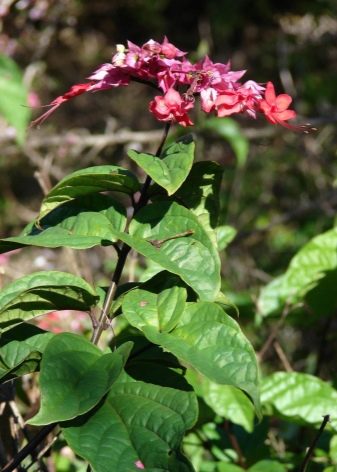
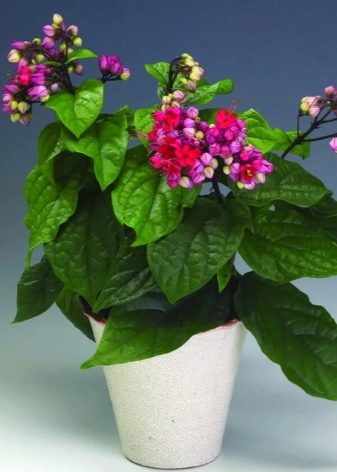
- Clerodendrum calamitosum (lat.Clerodendrum calamitosum) is a small shrub and has a beautiful flowering and a delicate sweetish aroma, which is especially felt in the evening. The snow-white flowers are in the shape of a butterfly, which is why they vaguely resemble the inflorescences of the Ugandan species.
The plant is well suited for home cultivation and blooms from the end of winter.

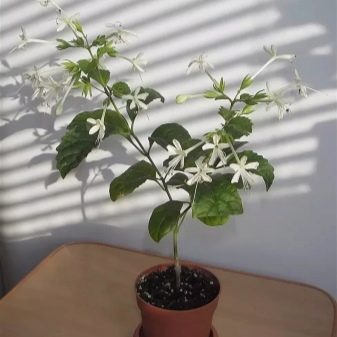
- Clerodendrum incisum is a very beautiful and unpretentious variety. The flower is very compact in size: the height of an adult bush never exceeds 70 cm. Snow-white flowers are located on elongated pedicels, have long crimson stamens and hang in clusters from the branches. Flowering continues throughout the year with short breaks. The plant is distinguished by velvety, pleasant to the touch, dark green leaves and reproduces well with cuttings. The flower prefers bright light and grows very vigorously.
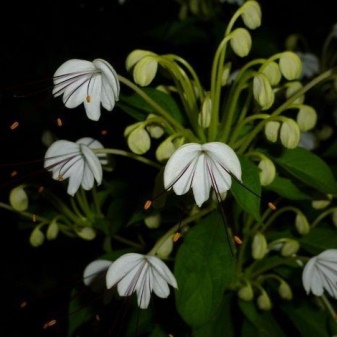
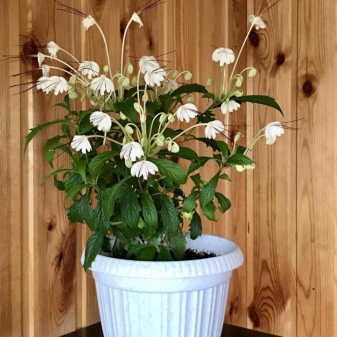
- Clerodendrum sahelangii - a beautiful, hardy and rather rare plant, which is suitable both for garden cultivation as an annual, and for indoor cultivation. The bush has straight branches, from which in the spring and summer months beautiful white flowers with long legs, reminiscent of a spray of champagne, hang.
The variety grows very quickly, requires abundant watering and is absolutely not picky about lighting, which is why it can be placed both in the open sun and in partial shade.
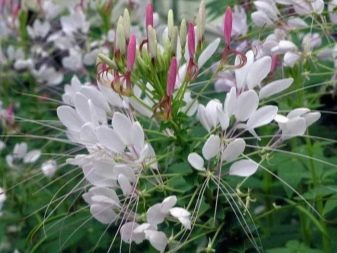
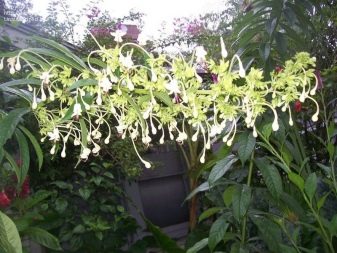
Landing
Before planting or transplanting a clerodendrum, it is necessary to prepare a nutrient soil. For this, leaf humus, clay soil, river sand and peat are mixed in equal proportions, or a ready-made substrate is purchased in the store. When preparing the mixture yourself, the main thing is not to "overdo it" with peat, since clerodendrum requires slightly acidic soil with a pH level of 5 to 6.5 units. The purchased soil has already passed the necessary processing and is completely ready for use, but the homemade composition must be well disinfected.
To do this, the mixture is cleaned of small mechanical debris and vegetation residues, after which it is spread in a thin layer on a baking sheet. Then the oven is heated to 200-220 degrees and the earth is placed in it for 20 minutes.If it is not possible to use the oven, then you can use the following method: pour a little water into the pan and stretch a soft, permeable cloth over it. Then a thin layer of substrate is poured over the material and the fire is turned on. After the water boils, the soil is left to disinfect for 10-15 minutes, then it is removed and a new portion is poured in its place.
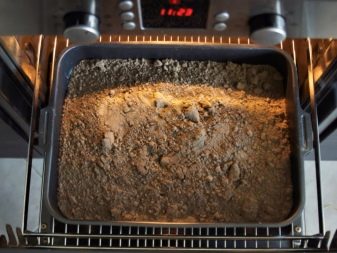

The transplant of adults is performed in the spring - as soon as the plant comes out of dormancy and prepares to actively build up the green mass. The procedure is carried out as needed, when the plant has grown strongly and there is a risk of the pot overturning. To do this, choose a large stable container, which is 2-4 cm wider than the previous one, form a drainage layer of expanded clay or river pebbles at the bottom with a thickness of at least 3-4 cm and pour a small layer of nutrient substrate.
Then the plant is transferred to a new pot using the transfer method, while preserving the integrity of the earthen lump as much as possible. The missing soil is poured along the edges and lightly tamped. The flower is placed in a calm, moderately shaded place, and after 2-3 days it is carefully moistened. Further, the clerodendrum is removed to its original place and transferred to a general care regimen.
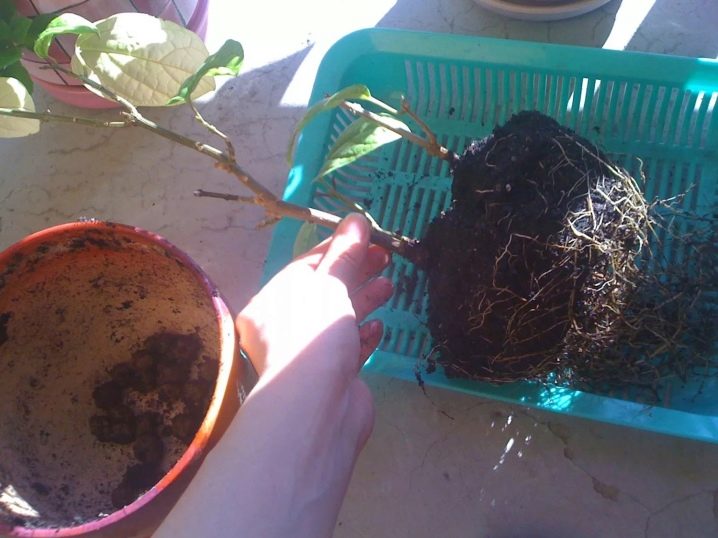
Freshly purchased plants are transplanted at any time of the year. To do this, the plant is given 2-3 weeks to adapt to the new conditions of temperature and humidity, and only after that they begin to transplant it. To do this, slightly shake the pot and carefully separate the soil from its walls with a thin stick. Then the plant is transplanted together with an earthen lump, placed in the center of a new pot and the missing soil is added.
For the first five years, it is recommended to replant a young plant annually, and starting from the sixth year of life - once every 3 years.
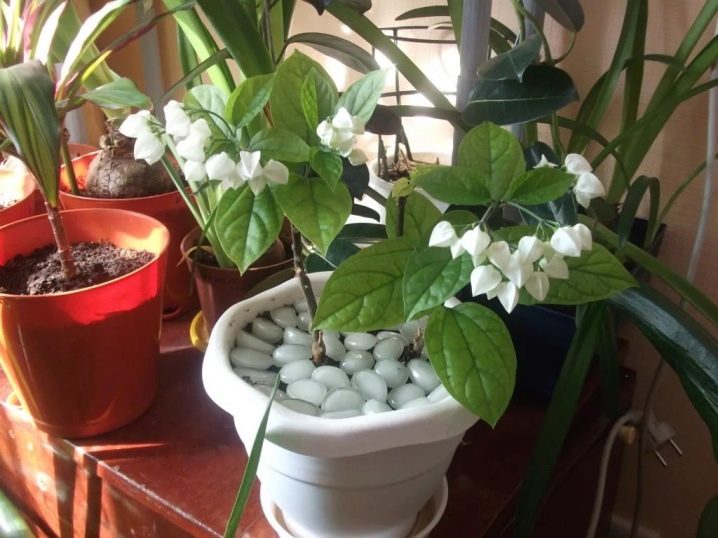
Care
Home breeding of clerodendrum requires the creation of favorable conditions for temperature, humidity and light, and also involves regular watering, feeding and timely pruning.
Illumination
Volkameria is an unpretentious culture and equally well perceives both a well-lit place and partial shade. However, experienced florists recommend placing the plant in a slightly shaded space and not allowing direct UV rays to hit its crown for a long time. The best option for placing a clerodendrum will be east or west windows., on which one part of the daylight hours the plants will be illuminated by the rays of the sun, and the remaining time will be in the shade. If the flower is placed near the northern window, then it will greatly lack lighting, which is why its flowering will be irregular and scarce. In such cases, it is recommended to use phytolamps to increase the brightness of the lighting and extend the daylight hours.
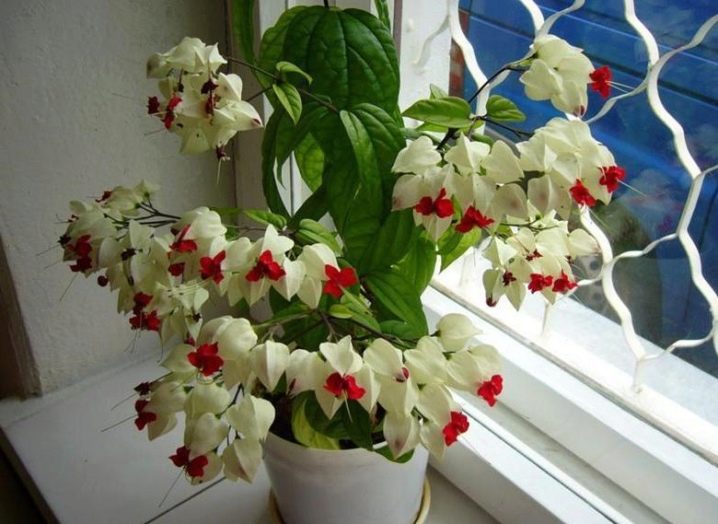
Temperature and humidity
Clerodendrum does not require the creation of any special thermal regime and grows well at a normal room temperature of 20-25 degrees. In winter, when the plant is dormant, it is recommended to remove it to a cooler room with a temperature of 15-18 degrees. During the summer months, pots can be taken outside, on a balcony or on an open veranda, provided that night temperatures do not drop below 15 degrees.
With regard to moisture content, volcameria is a fairly moisture-loving plant. The flower requires increased room moisture and regular spraying. The plant should be irrigated only with soft settled water, otherwise a whitish ugly coating may appear on its leaves.
In the winter months, the flower is placed as far as possible from the heating radiators and additional measures are taken to increase the humidity of the air. To do this, use electric humidifiers or place pallets with wet pebbles in the immediate vicinity of flowers.


Watering
Despite the presence of drought-resistant species, most clerodendrum still need abundant and timely watering. It is necessary to moisten the plants as the upper layer of the substrate dries, while preventing the clod from drying out. For watering, it is better to use soft, settled water. In winter, watering is significantly reduced and is guided by the air temperature. So, the fewer the degrees in the room, the less poor watering should be.
During a dormant state, watering can be replaced by spraying the root zone, which is done with soft water at room temperature.
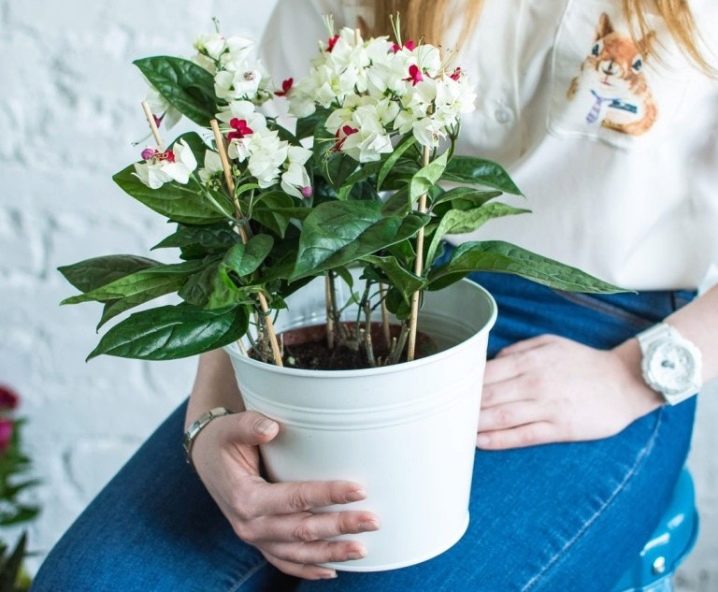
Top dressing
Clerodendrum should be fed throughout the growing season - from mid-April to September. For this, you can use any complex of mineral fertilizers intended for flowering plants. When choosing a drug, it is better to give preference to products with a low nitrogen content. This is due to the fact that its excess provokes the active growth of the green mass, due to which the plant may not have resources for flowering. The best option would be phosphorus-potassium complexes, which are recommended to be applied once a month. In addition to mineral dressings, clerodendrum also needs liquid organic additives, which are diluted according to the instructions and applied every 2 weeks.
At the beginning of autumn, feeding is stopped and the plant is prepared for a state of dormancy.
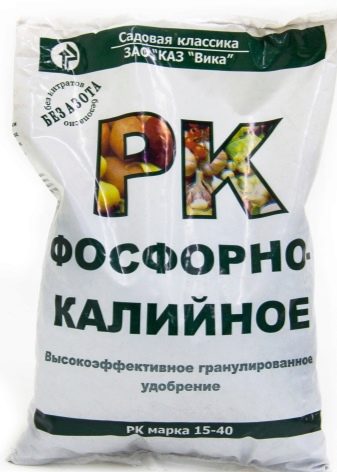

Pruning
Clerodendrum belongs to fast-growing crops and if not cared for, the flower can reach absolutely gigantic sizes. The plant should be pruned in the spring, while shortening to 1/3 of the length of the shoots and pinching the ends of the shoots. The flower tolerates the procedure very well and easily takes the form of a bush, tree or flexible vine. In addition to increasing decorativeness, pruning helps rejuvenate plants and provokes the appearance of flowers on young shoots. Throughout the growing season, stepchildren should be removed, and dry, diseased or damaged shoots should be cut off. Trimmed parts can serve as an excellent material for grafting, the main condition will be the presence of at least two growth points.
When growing clerodendrum in open ground, shrub-type plants are also pruned, and liana-like species are provided with additional supports. If it is necessary to form a stem, then the strongest stem is chosen and all lateral processes are cut off from it. When they reach a height of 50 cm, they cut it off and then pinch young shoots. The result is a beautiful tree, from which in the future, all the lower processes that originate from the root collar are regularly cut off.
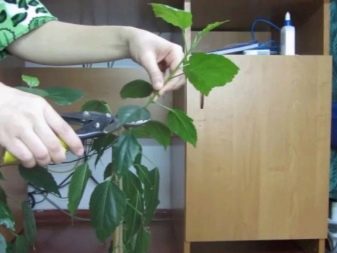
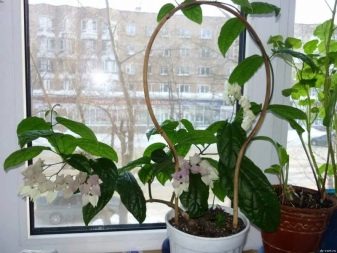
Dormant period
Wintering is a very crucial stage in the process of growing clerodendrum. The plant begins to prepare for it immediately after the last autumn flowering and the appearance of seeds. During this period, deciduous species begin to shed foliage and faded inflorescences, and evergreens are limited only to dropping dried flowers. As soon as the plant has begun to prepare, it is necessary to create all the necessary conditions for this, namely, minimum moisture, a temperature of 12-15 degrees and the absence of bright sunlight.
If possible, you should avoid early awakening of the plant, which can be triggered by an increase in daylight hours and an increase in temperatures. The plant should be awakened only at the end of February, moving it to a permanent (summer) place and gradually increasing the intensity of watering. Usually, in the first decade of March, the clerodendrum is already completely out of hibernation, begins to build up greenery and prepares for the formation of ovaries.
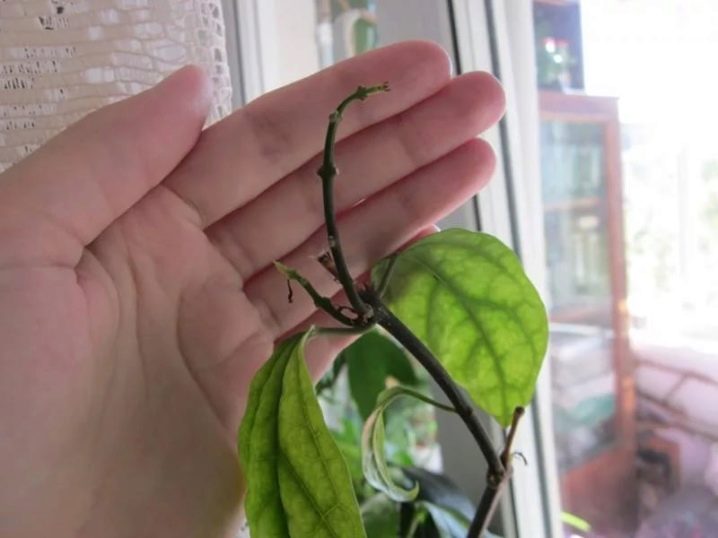
Reproduction methods
Volcameria can be propagated by seeds and cuttings.
Seed method
This method is used only in cases where it is not possible to cut the stalk, or in the course of breeding work.To do this, at the end of winter, an earth mixture consisting of sand, peat and turf is poured into shallow containers, moistened and seeds are planted. Then the planting is covered with glass or dense polyethylene and the boxes are placed in a warm, well-lit place. Every day, the film or glass is removed and the substrate is aired for 10-15 minutes. Spraying the soil is carried out as needed, keeping it moist.
The first shoots usually appear after 1.5-2 months, after which the mini-greenhouse is disassembled and grown open. Clerodendrum grows quite quickly, and soon the first leaves begin to appear on young shoots. As soon as their number reaches four, the shoots dive into separate containers with a diameter of 6-10 cm, placing from 1 to 3 plants in each pot.
The adaptation process in young shoots occurs rather quickly and after 1-2 weeks they start to grow rapidly.

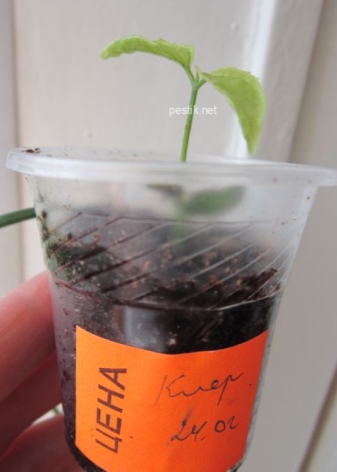
Cuttings
This method is effective and inexpensive, and allows you to get a new plant in a short time. As a planting material, you can use a cutting with 2-3 internodes obtained during pruning. It is placed in a container with filtered boiled water, adding crushed activated carbon at the rate of 3 tablets per glass of water. The jar is placed in a well-lit, warm place and protected from drafts. The best option would be the window sill of the western or eastern window, the main thing is that no cold air comes from the frame and glass.
After some time, the roots will begin to hatch on the handle, and after they reach a length of 3 to 5 cm, the shoot is transplanted into a separate pot with a diameter of no more than 7 cm. The sprout is then covered with a glass jar or cut plastic bottle and rooted until the first leaf appears. Every day, the mini-greenhouse is cleaned for 10-15 minutes, airing the shoot, moistening the substrate as needed. As soon as the first leaves appear, the cap is removed, and the clerodendrum is transferred to a general care regimen and grown in the same container until next spring. A year later, the plant is transplanted into a pot with a diameter of 10-12 cm and continues to grow under the recommended conditions. During this time, the shoots are pinched at least a couple of times, thereby accelerating their active growth and contributing to greater branching.

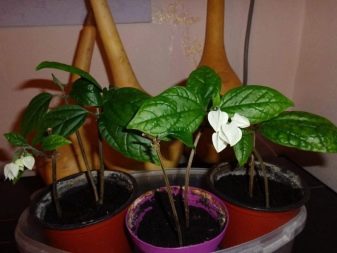
Diseases and pests
Clerodendrum has excellent immunity and rarely gets sick. Therefore, developmental abnormalities are more often due to mistakes in care than infectious diseases. Below is an overview of the most common problems, as well as possible causes and solutions.
- If the leaves of the clerodendrum turn yellow and wither, then the matter is most likely in insufficient watering. In this case, it is recommended to carefully trim the yellowed foliage and put the plant on a regular moisturizing regime.
- If the leaves, along with the buds, dry and fall off, then the reason may lie in the excessive dryness of the room air. To eliminate it, it is recommended to use moisturizers and spray the plant more often.
- If the leaf blades are covered with brown spots, it is most likely a sunburn. In this case, it is necessary either to shade the plant, or to create diffused light for it. This can be done using gauze stretched over the window or a tulle curtain.
- A large distance between two adjacent internodes and a bare stem are often the result of insufficient lighting. In such cases, it is recommended to place the plant closer to the sun or arrange additional lighting with a phytolamp.
- A long absence of flowering is often caused by improper organization of the dormant period or unbalanced feeding. Transplanting it into a fresh substrate and compulsory sleep during wintering will help to make the plant bloom. To do this, from the second half of October, the flower is transferred to a cooler room and watering is reduced.Some species completely shed their foliage at this time, which should not cause concern: after winter rest and spring pruning, the plant will quickly grow green mass and become even more beautiful.
- Chlorosis, the main signs of which are a decrease in color intensity, the appearance of yellowness and a change in the shape of leaf plates, is often the result of a lack of one or another trace element in the soil. The disease is not fatal and can be well cured by applying a complex of mineral fertilizers.
- Powdery mildew is often the result of watering with very cold water, therefore, only liquid warmed to room temperature should be used for humidification.
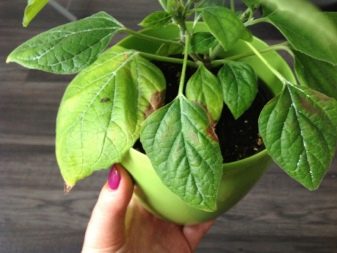

As for pests, the most often attacked by clerodendrum are whiteflies, scale insects and spider mites. The reason contributing to their appearance is too dry indoor air. You can completely get rid of insects with the help of modern insecticides. Processing is recommended to be carried out in two or three passes, taking a week break between them.
You can defeat the shield with Bona Forte, Aktaroy and Aktellik, and to destroy the whitefly and spider mite it is better to use Confidor or Fitoverm.
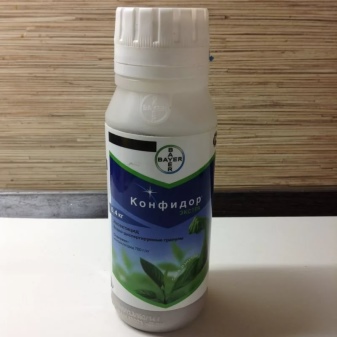
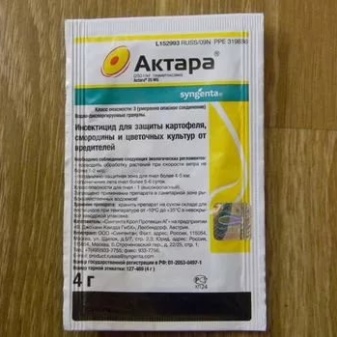
If it is not possible to purchase special preparations, then you can try folk methods. To do this, the clerodendrum is watered with infusion of onions or garlic. Most pests do not tolerate their specific odor and leave.
For information on how to grow clerodendrum, see the video below.


























The comment was sent successfully.